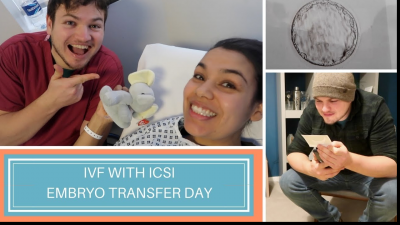Oxidative stress of sperm
Prospective study to determine the level of damaged DNA, both oxidized and fragmented, in the sperm used for insemination (IUI)> and sperm microinjection (ICSI), and its impact on the rate of fertilization and clinical pregnancy.
The conclusions of this study ensure that oxidative damage to sperm DNA has a negative impact on the clinical pregnancy rate in intrauterine insemination (IUI), but not in intracytoplasmic sperm cycles (ICSI).
Below you have an index with all the points that we will discuss in this article.
Index- 1. Sperm DNA
- 2. Methods of assisted reproduction
- 3. Results
- 3.1. Spermatic DNA fragmentation
- 3.2. Oxidation of sperm DNA (8-OHdG)
- 4. Conclusions
- 5. Bibliography
- 6. Authors and collaborators
Sperm DNA
To analyze the fragmentation of the sperm DNA, the TUNEL test was used and to study the oxidative stress, the biomarker 8-hydroxy-2'-deoxyguanosine (8-OHdG) was used.
The biomarker of oxidative damage in DNA (8-OHdG) was highly correlated with DNA fragmentation, this marker can predict pregnancy probabilities after IUI insemination but not after ICSI.
The impact of sperm DNA fragmentation on pregnancy rates increasingly begins to have a predictive value along with the conventional study of semen.
Oxidative stress of spermGroups that use the TUNEL test to measure fragmentation have found that a high value of this parameter lowers the clinical pregnancy rate after ICSI and IUI, as does the rate of abortions.
Another concern is the possible consequences once the pregnancy is achieved with sperm that have damaged DNA, because if this damage to the DNA is permanent, it can affect subsequent generations, increasing childhood cancer or some diseases.
Still more studies are needed to know exactly the mechanisms that induce the fragmentation of the spermatic DNA but it is known that it can be induced by heat, electromagnetic radiation, an abnormal lipid metabolism and oxidative stress. Of these factors, oxidative stress has been the most studied and the one that is believed to have the most effect on DNA sperm fragmentation.
The best biomarker to know the damage caused by oxidative stress in sperm is 8-OHdG, this marker has been found in greater proportion in the semen of infertile men.
Studies suggest that fragmentation of sperm DNA can affect both embryo quality and clinical pregnancy rates after ICSI or IVF. However, there are no studies that examine the damage caused by oxidative stress in IUI cycles.
Assisted reproduction methods
Prospective study including 101 cycles with freshly ejaculated semen and with women <40 years, of the total 48 cycles were ICSI and 53 IUI. The seminal samples were collected by masturbation and prepared 1 hour before the oocyte puncture.
After checking the sperm motility, the samples were prepared by density gradients. DNA fragmentation was analyzed in a minimum of 200 spermatozoa per sample using the TUNEL test. The percentage of spermatozoa with oxidative damage was evaluated using the 8-OHdG marker.
After performing the techniques of insemination or ICSI, pregnancy was determined with a result of b-hCG> 25 IU 18 days after the uptake of oocytes. Clinical pregnancy was confirmed with a fetal heartbeat after 6 weeks.

Bibliography
Thomson LK, Zieschang JA, Clark AM. Oxidative deoxyribonucleic acid damage in sperm has a negative impact on clinical pregnancy rate in intrauterine insemination but not intracytoplasmic sperm injection cycles. Fertil Steril. 2011; 96 (4): 843-7
Comments
Post a Comment